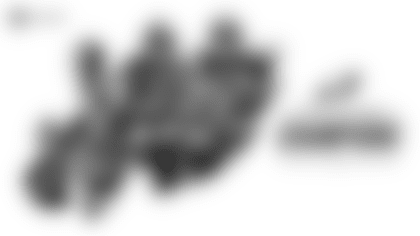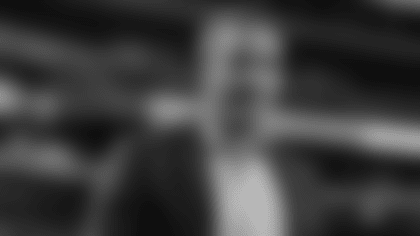Thirty years ago, the NFL players went on strike. We had seen it before but never like this. This time the veterans walked out and the owners brought in replacement players. They took guys off the street, put them in uniform, and played three games that actually counted as regular-season games.
I still consider it the darkest chapter of NFL history. I know we observe Halloween in October but this - truck drivers and insurance salesmen dressing up as pro football players and playing real games - wasn't my idea of fun. In fact, when the Eagles played their first strike game, an ugly affair at Veterans Stadium, this was the lead to my column in the Philadelphia Daily News.
"Yesterday for the first time in my life, I hated pro football. I hated what I saw outside Veterans Stadium and I hated what I saw inside. I hated what the game had become."
It was a long time ago yet the memory is still vivid. More than a thousand union supporters rallied outside the Vet on the morning of the game, blocking the entrances and shouting profanities at the handful of fans who turned out to see the Eagles' replacement players meet the Chicago Bears' replacement players. The striking players who were on the picket line tried to keep the peace but the situation got out of control. People were knocked to the ground, cars were egged, windshields were smashed. It was ugly.
Buddy Ryan, the Eagles' coach, hated it as much as I did, maybe more. When the union went on strike, Ryan told his players to stick together. He didn't want anyone crossing the picket line to play for the replacement team. He knew the strike would end eventually and he didn't want to have a fractured locker room when it was over. It wasn't that way in every city - indeed, Joe Montana, Lawrence Taylor, and other stars crossed the line - but the Eagles stayed together.
The Eagles were in their third year under Ryan and things were just starting to come together. Randall Cunningham had taken over for Ron Jaworski at quarterback and was showing promise. Reggie White was dominating on defense (he had 21 sacks in 12 games that year) and young players like Jerome Brown, Seth Joyner, and Clyde Simmons were an ideal fit for Ryan's take-no-prisoners defense.
The Eagles were definitely on the uptick and just like that, the season was turned upside down. Ryan saw his players walk out the door carrying picket signs and through the door came this motley assortment of guys assembled on short notice by the front office. Ryan could barely stand to look at them much less coach them. When they practiced, Ryan stood off to the side, twirling his whistle, not saying a word.
Ryan wanted nothing to do with the sham that was replacement football. However, Norman Braman, the Eagles' owner, was one of the most hawkish voices on the management side. The fact that Ryan so openly rejected the owners' strategy began the friction between the two men that ultimately led to Ryan's dismissal. But to me, Ryan was clearly on the right side of this argument.
Each team played three replacement games - the Eagles lost all three - but as embarrassing as they were, they did add another chapter to the Eagles-Cowboys rivalry. That's because the Eagles' second replacement game was in Dallas where the mood of the public was much different. Unlike Philadelphia which is a strong union city, Dallas, like the rest of Texas, is not. There the replacement players were hailed as folk heroes.
The* Dallas Times Herald* conducted a poll and 82 percent of those responding supported the owners. When I was in Dallas for the game, the team's public relations director told me they logged 394 phone calls to the Cowboys Hot Line and every one was positive.
"These guys are our Rockys," the PR director said. "We shot a new team picture and everything."

The Eagles' replacements warmed up before a game against the Bears at Veterans Stadium during the 1987 strike.
Here was the other difference: A number of Cowboys veterans crossed the picket line to play with the replacements, including quarterback Danny White, running back Tony Dorsett, and defensive tackle Randy White. So when Ryan went into Texas Stadium with his lineup of Scott Tinsley, Guido Merkens, and Topper Clemons, he knew he had no chance. Of course, Dallas coach Tom Landry knew it, too, so he opened the game with a little razzle-dazzle - an end-around - that resulted in a 62-yard touchdown.
Ryan watched, arms folded across his chest, steaming. The Cowboys pushed the Eagles' scrubs around all day, opening a 41-10 lead. In the fourth quarter, Landry pulled his regulars, including Too Tall Jones, and put his scrubs in the game. The Eagles managed to score two touchdowns and late in the game they were driving again. Landry had the game won but he didn't want the Eagles to score again so he sent his veterans back onto the field to snuff out the drive and end the game.
Ryan didn't forget. Two weeks later, when the strike ended and the veterans returned, the Cowboys came to the Vet and Ryan got his revenge. Leading 30-20 with seconds remaining, Ryan had Cunningham fake a kneel down, stand up, and throw deep to Mike Quick. Pass interference was called so the Eagles got a first down at the 1-yard line. Ryan sent Keith Byars up the middle for an in-your-face touchdown that made the final score 37-20.
Buddy hadn't smiled in a long time but he was smiling when he headed up the tunnel that day.
An award-winning writer and producer, Ray Didinger was inducted into the Pro Football Hall of Fame in 1995. He has also won six Emmy Awards for his work as a writer and producer at NFL Films. The five-time Pennsylvania Sportswriter of the Year is a writer and analyst for NBC Sports Philadelphia. Didinger will provide Eagles fans a unique historical perspective on the team throughout the year for PhiladelphiaEagles.com. You can read all of his Eagles History columns here.























